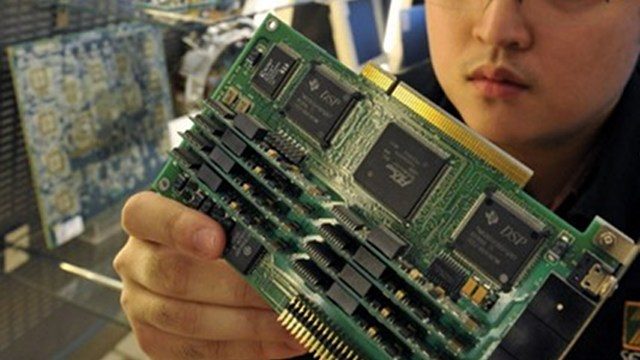SUMMARY
This is AI generated summarization, which may have errors. For context, always refer to the full article.

The National Economic and Development Authority (NEDA) reported on Thursday, September 25, that Vietnam (16.4% growth); Taiwan (9.5%); and South Korea (5.8%) were the only countries in the region that posted growth in merchandise imports.
“The overall performance of merchandise imports is showing signs of mild recovery from its decline of -0.4% in May this year,” NEDA Deputy Director-General Emmanuel Esguerra said.
Payments for Philippine merchandise imports amounted to $5.5 billion in July 2014, registering an almost nil expansion from $5.5 billion in July 2013, NEDA reported on Thursday, September 25.
For the first 7 months of 2014, payments for imports rose by 4.8% to $36.9 billion from $35.2 billion in the same period a year ago.
Given the slower growth of imports relative to the 9% expansion in merchandise exports in January to July 2014, trade-in-goods deficit narrowed to $1.7 billion.
Growth is also better this year compared to the same period in 2013 at -1.6% contraction.
“However, on a year-on-year basis, it is way below the 8.9% growth in 2013,” Esguerra pointed out.
Electronics imports drops steeply
The small increment was also due to year-on-year gains in overseas spending for mineral fuels, lubricants, and consumer goods, which partially cushioned the contractions in the value of imported raw materials and capital goods, data from the Philippine Statistics Authority showed.
Electronics components – the country’s biggest dollar-earning commodity – fell 29.8% to $1.14 billion this year from $1.63 billion last year, the steepest drop since March 2012 when shipment fell 38.7 %.
Meanwhile, total import value of mineral fuels and lubricants rose by a hefty 20.4% to $1.2 billion in July 2014 from $1 billion in July last year.
In the same period, overseas purchases of consumer goods increased by 10.5% to $779.2 million from $705 million.
Esguerra said that the sharp contractions in the imports of materials and accessories for the manufacture of electrical equipment and other raw materials for production, as well as imports of capital goods need to be monitored periodically.
“They provide signals on future demand conditions on both domestic and external fronts,” Esguerra said.
China as the biggest source of imports
The People’s Republic of China had the biggest share of imports in July at 14.2%, amounting to $781.9 million.
Second was Japan with a share of 8.5%; followed by Taiwan (8.3%); United States of America (7.5%), and Singapore (6.4%).
The value of imported commodities from major Association of Southeast Asian Nations (ASEAN) trading partners represented about 23.7% ($1.3 billion), mostly on capital goods and materials needed for the manufacture of electrical equipment.
“It is also important for the government to continue exploring avenues for greater opportunities within the ASEAN region and take advantage of increased economic cooperation among ASEAN countries,” Esguerra said.
Meanwhile, the European Union provided $609.9 million or about 11.1% share of the country’s total import requirements in July 2014. – Rappler.com
Add a comment
How does this make you feel?
There are no comments yet. Add your comment to start the conversation.